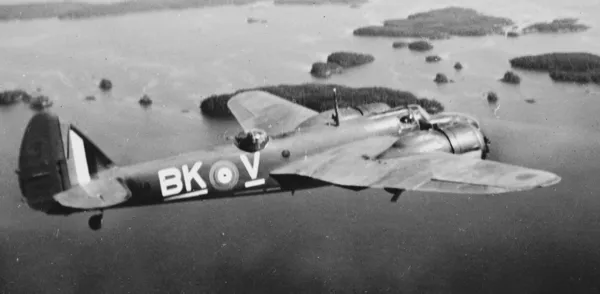Leading Aircraftman (LAC) John Leighton Buttsworth (RAAF) accidentally walked into revolving propeller from taxiing Bolingbroke aircraft 10124 and was killed. Leading Aircraftman John Leighton had previously joined the Australian Army before transferring to the Royal Australian Air Force. (R.J. Annis, CONTACT Vol. 31, No. 2, May 2014, CATP Museum, Brandon, Manitoba) Paul Squires
Buttsworth, John Leighton (Leading Aircraftman)
Killed in Flight Line Accident 1945-February-16


Birth Date: 1920-July-30
Born: Windsor, New South Wales, Australia
Parents: Son of Amos Henry and Amy Florence Buttsworth, of Wilberforce, New South Wales, Australia
Spouse:
Home: Wilberforce, New South Wales, Australia
Enlistment:
Enlistment Date: unkown date
Service
RAAF
Unit
10 (OT) BGS- Bombing & Gunnery School
Base
RCAF Station Mount Pleasant, PEI
Rank
Leading Aircraftman
Position
Wireless Operator/Air Gunner
Service Numbers
439948
Prev: AUS/439948
Bolingbroke serial: 10124

Fairchild Bolingbroke Mk. IV, RCAF (Serial No. 9118), coded BK-V, No. 115 (Bomber Reconnaissance) Squadron, Patricia Bay, British Columbia, 1942.
The Bristol Fairchild Bolingbroke was a maritime patrol aircraft and trainer used by the Royal Canadian Air Force during the Second World War. Built by Fairchild-Canada, it was a license-built version of the Bristol Blenheim Mk IV bomber.
In 1935, the British Air Ministry issued Specification G.24/35 to procure a coastal reconnaissance/light bomber to replace the Avro Anson. Bristol proposed the Type 149, based on its Blenheim Mk I, with Bristol Aquila engines to give greater range. While the Air Ministry rejected this proposal, a Blenheim Mk I, retaining its Mercury VIII engines, was converted as a Type 149 (Blenheim Mk III) for the general reconnaissance role.The nose was lengthened to provide more room for the bombardier, with the upper left surface of the nose being scooped out to maintain pilot visibility during takeoff and landing.
The longer range also fulfilled a Canadian requirement for a maritime patrol aircraft. Consequently, Fairchild Aircraft Ltd. (Canada) of Quebec started production of the Blenheim Mk IV as the Bolingbroke (the originally intended name for the Blenheim IV). This type was nicknamed the "Bolly". After a small run of aircraft constructed to British specifications, as the Bolingbroke Mk I, Fairchild switched production to the Bolingbroke Mk IV with Canadian and American instruments and equipment. These versions also included anti-icing boots and a dinghy. One of the early Mk IV variants was the Bolingbroke Mk IVW which was powered by two 825 hp (615 kW) Pratt & Whitney SB4G Twin Wasp Junior engines. Incapable of maintaining altitude on one engine, the normal bomb load was reduced to 500 pounds on these aircraft to compensate for the low engine power. The most-produced variant was the Bolingbroke Mk IVT trainer, of which 457 were completed. A total of 626 Bolingbrokes were produced. Wikipedia
Aircraft Images
Bolingbroke 10124
Bolingbroke Mk. IVT 10124
Delivered to stored reserve with No. 1 Training Command. To No. 6 Repair Depot at RCAF Station Trenton, Ontario for conversion to target tug, 2 June to 12 August 1944. To No. 3 Training Command when completed. To No. 1 Air Command on 15 January 1945. To stored reserve shortly after. Pending disposal from 4 January 1946. Had 198:25 airframe time when struck off.1943-03-09 Taken on Strength 2019-08-20
1945-February-16 Accident: 10 Bomb & Gunnery School Loc: Aerodrome Names: Buttsworth | Lovell | Worth
1946-07-09 Struck off Strength Struck off, to War Assets Corporation for disposal 2019-08-20
Unit Desciption
10 (OT) BGS (10 Bomb and Gunnery School)
The Bombing and Gunnery School (B&GS) offered instruction in the techniques of bomb aiming and aerial machine gunnery to Air Observers, Bomb Aimers, and Wireless Air Gunners. These schools required large areas to accommodate their bombing and gunnery ranges, and were often located near water. The Avro Anson, Fairey Battle, Bristol Bolingbroke, and Westland Lysander were the standard aircraft used at B&GS schools.

 Wilberforce, New South Wales, Australia
Wilberforce, New South Wales, Australia School Daily Diary Entry 1945-02-16
School Daily Diary Entry 1945-02-16 AFC & RAAF Rolls of Honour - Aviation Heritage Museum
AFC & RAAF Rolls of Honour - Aviation Heritage Museum Commonwealth War Graves Commission
Commonwealth War Graves Commission Findagrave.com
Findagrave.com Library and Archives Canada Service Files (may not exist)
Library and Archives Canada Service Files (may not exist) Wikipedia Bolingbroke Bomber
Wikipedia Bolingbroke Bomber Bolingbroke Bomber WWII
Bolingbroke Bomber WWII Bolingbroke - Kestrel Publications
Bolingbroke - Kestrel Publications